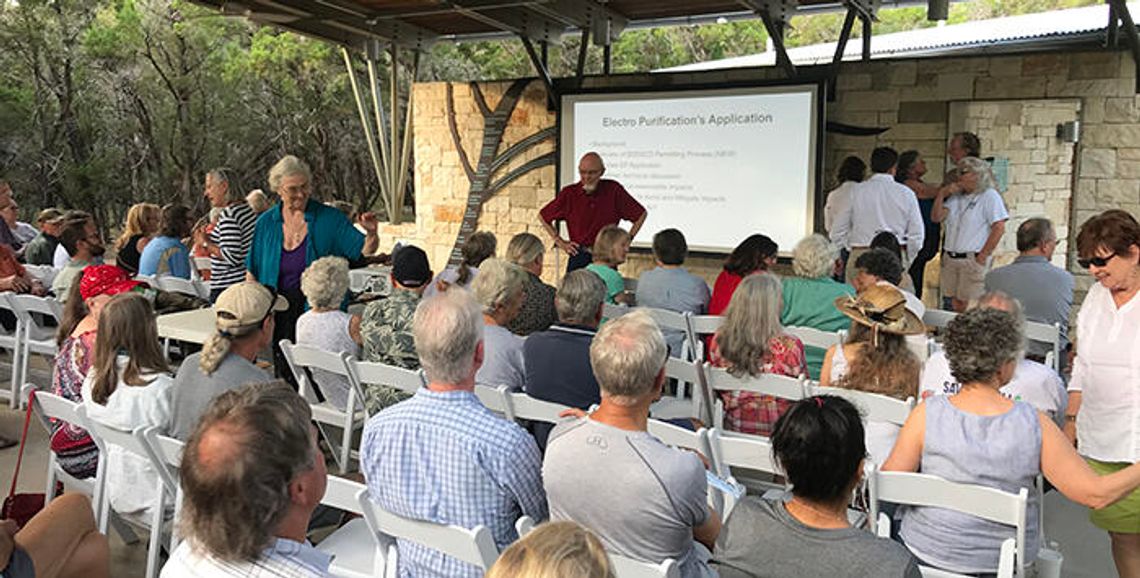Controversy continues to build over a Houston-based company’s proposal to pump 2.5 million gallons per day from the Trinity Aquifer.
On May 16, roughly 100 residents gathered at the Blue Hole Regional Park pavilion in Wimberley in protest of Electro Purification’s (EP) permit with the Barton Springs Edwards Aquifer Conservation District (BSEACD). The gathering was part of a forum hosted by the Trinity Edwards Springs Protection Association (TESPA).
Executive director and general counsel for TESPA acknowledges that BSEACD is looking in the matter closely to determine if the permit will cause unreasonable risk to the aquifer.
EP, which attempted to obtain water from the Trinity Aquifer in 2015, has seven test wells located between Kyle and Wimberley to monitor the amount of water the company can successfully pump. According to EP’s application, the company’s proposed “avoidance actions” include a five-year, five-phase plan to pump smaller amounts from the aquifer.
Phase I would call for 273,750,000 gallons of water to be pumped in the first year with a gradual increase to nearly one billion gallons of water per year in Phase V, which is expected to be completed by 2023.
Vanessa Puig-Williams, executive director and general counsel for TESPA, said she believes the permit may pass with these phases put into effect, but acknowledges that BSEACD is looking in the matter closely to determine if the permit will cause unreasonable risk to the aquifer.
“The BSEACD has been completely transparent and helpful with the process,” Puig-Williams said. “It is clear, from EP’s application, that this amount of pumping will cause harm to the aquifer.”
Les Carnes, a Hays County resident who lives within a half mile of EP’s testing wells, said his quality of life is at risk with the proposed amount of pumping from the aquifer.
“I love where I live and just like my neighbors, I’m not going anywhere,” Carnes said. “These jerks from Houston shouldn’t be allowed to threaten everything I’ve worked for and take the water that is precious to this community.”
Carnes, like many of the residents present at the meeting, were concerned about their wells going dry with the amount of pumping EP is hoping to achieve.
The Hays Trinity Groundwater Conservation District (HTGCD) and BSEACD are two entities which have jurisdiction over the regulation of both the Edwards and Trinity aquifers.
EP’s proposed pumping site is located within BSEACD’s jurisdiction. However, well owners located in HTGCD could potentially see the repercussions associated with the pumping.
EP’s wells are located on the periphery of the BSEACD’s jurisdiction line, located within a few miles of Hays Trinity wells.
“Obviously, some of our well owners will be impacted by this and that is a concern for us,” said Linda Kaye Rogers, president of the HTGCD board of directors. “Because the wells are not in our jurisdiction, we don’t have a foot in the barrel to stomp the grapes. I owe you an apology that our district has not closely watched this enough and we will work to stay informed and work with BSEACD about this issue.”
On Monday, the BSEACD released its recommendations to EP’s proposed permit. We will provide an in-depth look at what the BSEACD seeks with that permit in next week’s News-Dispatch.










